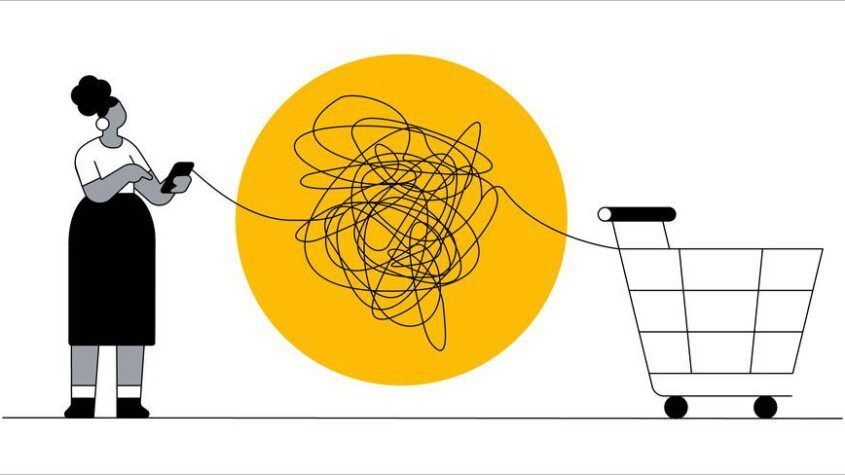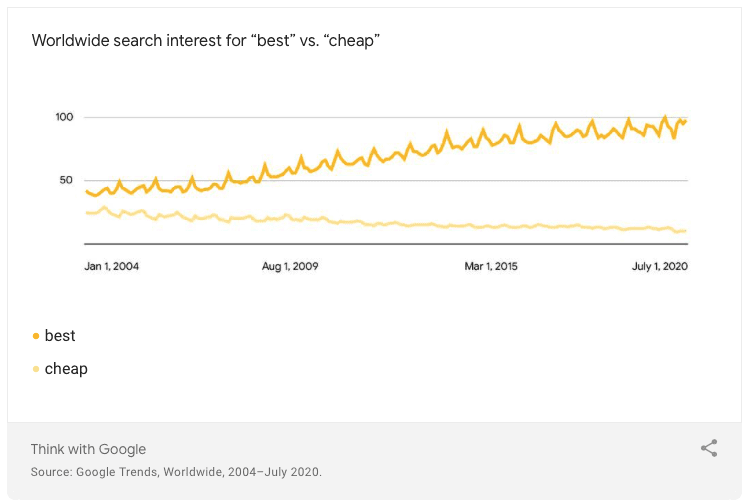
How people decide what to buy lies in the ‘messy middle’ of the purchase journey
Alistair Rennie and Jonny Protheroe work on Google’s consumer insights team, which means they spend a large part of their day exploring changes in consumer behavior. Here they share their latest research on the buyer decision process.
The way people make decisions is messy — and it’s only getting messier. Still, there are a few things we know about purchase behavior. We know that what happens between trigger and purchase decision-making is not linear. We know there is a complicated web of touchpoints that differs from person to person. What is less clear however, is how shoppers process all of the information and choice they discover along the way. And what is critical, what we set out to understand with this new research, is how that process influences what people ultimately decide to buy.Download the full report to learn more about the messy middle of purchase behaviorDownload

As the internet has grown, it has transformed from a tool for comparing prices to a tool for comparing, well, everything. That’s clear in how we’ve seen purchase behavior change over the years on Google Search. Take the terms “cheap” and “best.” Worldwide, search interest for “best” has far outpaced search interest for “cheap.”1 Those same dynamics hold true in countries around the world, like Germany, India, and Italy, for instance, when “cheap” and “best” are translated into local languages.
The precise value of “cheap” may vary between individuals, but it still carries a singular meaning. “Best,” on the other hand, can have a wide range of meanings, including value, quality, performance, or popularity.
This is the kind of research behavior that happens in the “messy middle” between trigger and purchase. And as COVID-19 has accelerated online shopping and research around the world, it’s more important than ever for brands to learn how to make sense of it.
Applying behavioral sciences principles to the purchase decision process
Last year we set out to update our perspective on consumer decision-making, and with the help of behavioral science experts, The Behavioural Architects, we started on a journey into decoding how consumers decide what to buy.
We conducted literary reviews, shopping observation studies, search trend analyses, and a large-scale experiment. Our aim was to understand how consumers make decisions in an online environment of abundant choice and limitless information. What we found was that people deal with scale and complexity by using cognitive biases encoded deep in their psychology.
As these biases existed long before the internet, we were curious to understand how they affect people’s purchase decisions today.
What happens in the messy middle? Two mental modes
Through the research, an updated decision-making model began to take shape. In the center of the model lies the messy middle — a complex space between triggers and purchase, where customers are won and lost.
People look for information about a category’s products and brands, and then weigh all the options. This equates to two different mental modes in the messy middle: exploration, an expansive activity, and evaluation, a reductive activity. Whatever a person is doing, across a huge array of online sources, such as search engines, social media, aggregators, and review websites, can be classified into one of these two mental modes.

People loop through these twin modes of exploration and evaluation, repeating the cycle as many times as they need to make a purchase decision.
Cognitive biases that influence purchase decision-making
As people explore and evaluate in the messy middle, cognitive biases shape their shopping behavior and influence why they choose one product over another. While many hundreds of these biases exist, we prioritized six in our research:
6 biases that influence purchase decisions

- Category heuristics: Short descriptions of key product specifications can simplify purchase decisions.
- Power of now:

















